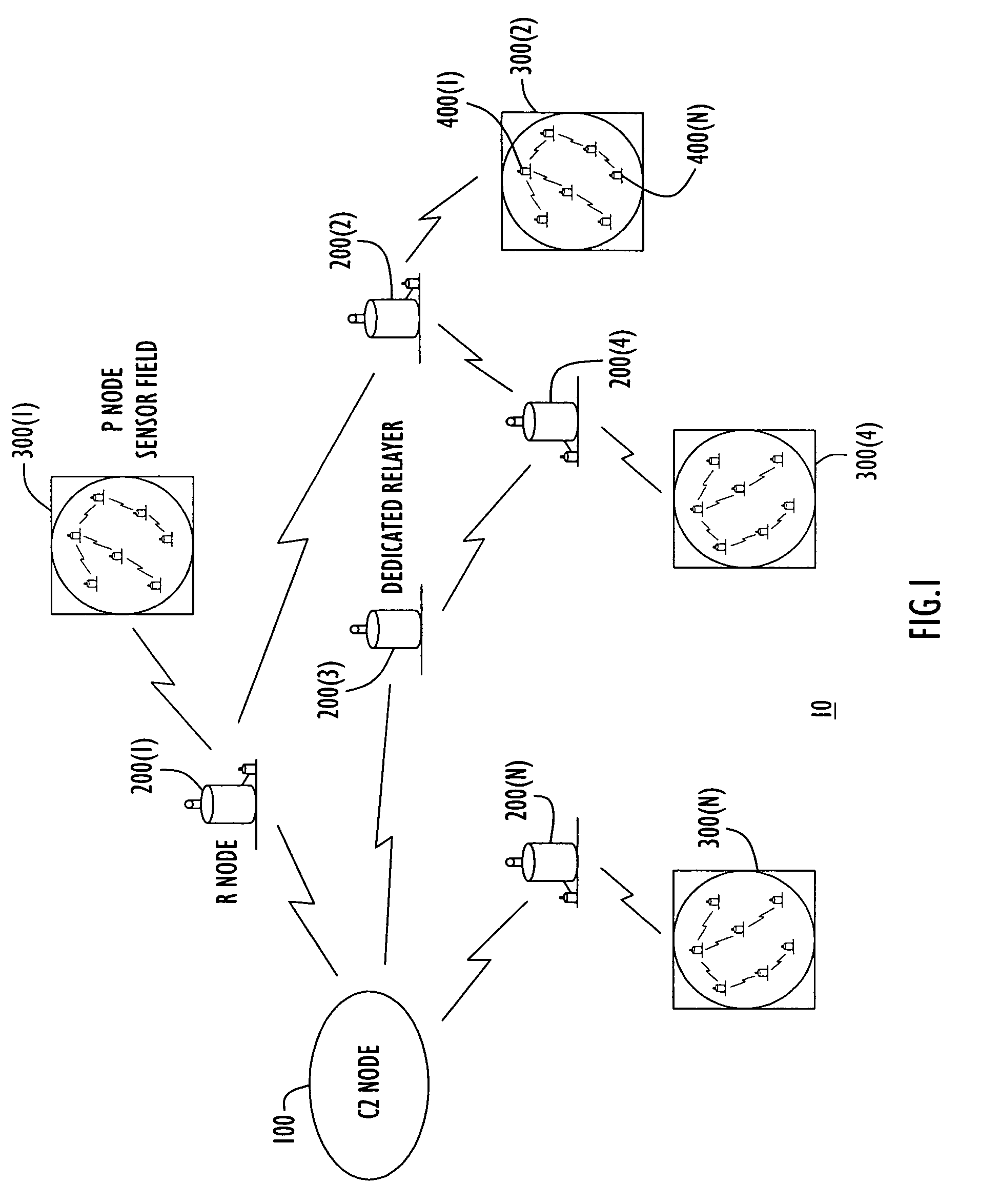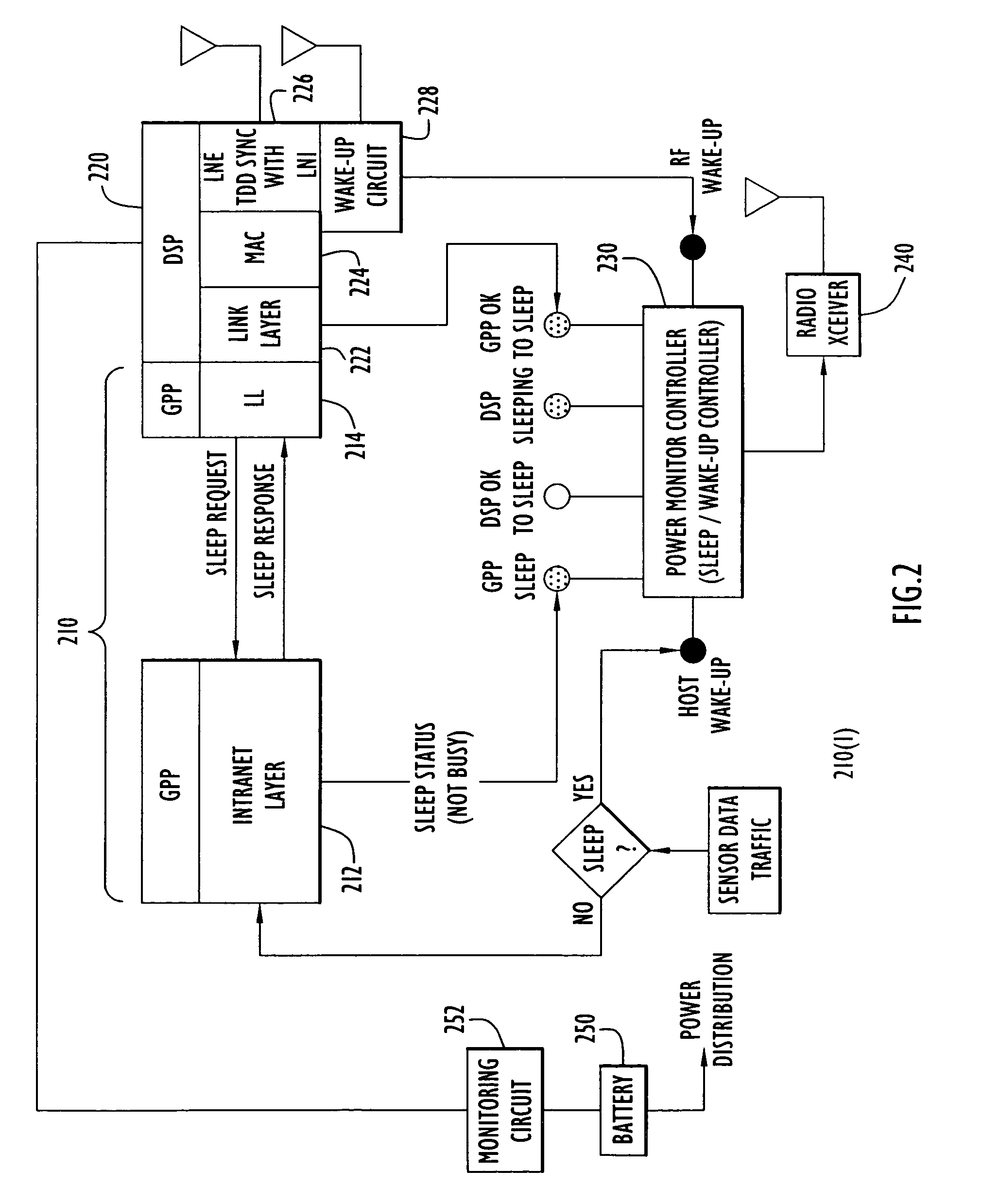Energy-efficient network protocol and node device for sensor networks
a sensor network and network protocol technology, applied in data switching networks, high-level techniques, synchronisation arrangements, etc., can solve the problems of network partitioning, energy efficiency is critical, and reduce network life, so as to achieve energy efficiency, prolong network life, and balance energy consumption.
- Summary
- Abstract
- Description
- Claims
- Application Information
AI Technical Summary
Benefits of technology
Problems solved by technology
Method used
Image
Examples
Embodiment Construction
[0023]FIG. 1 illustrates a wireless unmanned ground sensor (UGS) network 10 that is an example of the type of wireless sensor network in which the techniques described herein may be useful. The unique system requirements of the UGS network 10 affect virtually every aspect of its design, such as routing and link layer protocols. In the UGS network 10, the sensor derived data is forwarded to a Command & Control vehicle, called a C2 node, for processing. The C2 node is also referred to herein as the main node, hub node or “root” node in the sense that all other nodes feed data back to the C2 node. Thus, when the network 10 is viewed having a tree-like topology, the C2 node serves as a “root” node with respect to the other nodes. Sensors are deployed in the field in groups where sensors are located in proximity to each other.
[0024]Pointer sensors (referred to as P nodes) form a multi-hop network using short-range radios. Each sensor network also includes long-range-radio-equipped recogn...
PUM
 Login to View More
Login to View More Abstract
Description
Claims
Application Information
 Login to View More
Login to View More - R&D
- Intellectual Property
- Life Sciences
- Materials
- Tech Scout
- Unparalleled Data Quality
- Higher Quality Content
- 60% Fewer Hallucinations
Browse by: Latest US Patents, China's latest patents, Technical Efficacy Thesaurus, Application Domain, Technology Topic, Popular Technical Reports.
© 2025 PatSnap. All rights reserved.Legal|Privacy policy|Modern Slavery Act Transparency Statement|Sitemap|About US| Contact US: help@patsnap.com



